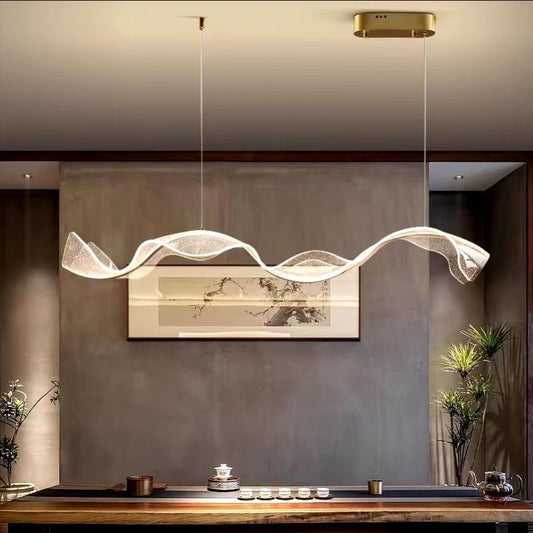Lighting is super important in making a room look and feel great. It's not just about making things bright - it can change the whole mood of a space. Different styles of lights, from really modern ones to classic traditional ones, can totally change how a room feels. In this guide, we'll look at different lighting styles and how to use them in your home. We'll explain each style and give you tips to help you choose the right lights for your rooms.
Key Lighting Style Considerations
Modern Lighting Systems: Key Points
- LED lights save energy and last longer
- Smart lights can be controlled with your phone
- Using different types of lights together makes rooms more useful
- Light color affects mood - warm for relaxing, cool for working
- Eco-friendly lights help the environment
- Modern lights have simple designs
- Traditional lights have fancy details
- Transitional lights mix modern and traditional styles
- Choose lights that fit the room's use and your style
- Using different lights creates depth in a room
Modern Lighting: Sleek and Contemporary
Modern lights have simple designs and use cool materials like glass, metal, and LEDs. They work great in open spaces with neutral colors. These lights aren't just for seeing - they're also part of the room's style. Modern lights fit well with today's architecture that likes open, uncluttered spaces.

The Kely Drop Stairwell Pendant Light is a cool modern light. It's long and skinny, perfect for stairways or rooms with high ceilings. It looks dramatic and lights up the space well. The Lucy Modern Staircase Chandelier is another modern light that's both useful and pretty. You can change how low it hangs, and it uses energy-saving LED lights. This light shows how modern lights can be practical and look like art at the same time.
Traditional Lighting: Timeless Elegance
Traditional lights have fancy designs and warm colors. They often use classic shapes that have been popular for a long time. These lights make formal dining rooms, entryways, and living rooms look fancy. Traditional lights are often made with nice materials like crystal, brass, and special glass. They show off skilled craftsmanship and can make a room feel more luxurious.

The Bliss Traditional Staircase Chandelier looks classic with its crystal parts. You can change how low it hangs. This light shows how traditional styles can work in modern homes, especially in places like staircases. For dining rooms, vintage dining room light fixtures mix old-fashioned looks with new technology. You can get these in different colors to match your room. These lights show how traditional styles can still work well in today's homes.
Transitional Lighting: The Best of Both Worlds
Transitional lights mix modern and traditional styles. They're great for people who like both new and old-fashioned looks. These lights usually have simple shapes with a few decorative touches. The cool thing about transitional lights is that they can fit in with lots of different room styles, from updated classic homes to modern rooms with some traditional stuff.
The dining room lighting collection at Seus Lighting has lots of transitional style options. These lights use modern materials but have shapes that look a bit traditional. This mix works well in many different kinds of rooms. For example, a chandelier that has an old-fashioned shape but is made of new materials like brushed nickel or matte black can fit in both modern and traditional rooms.
Choosing the Right Style for Your Space
Room Size
Think about how big the room is and how high the ceiling is
Existing Decor
Pick lights that match the style of your room
Functionality
Choose lights that work well for what you do in the room
Personal Taste
Pick lights you really like that show your style
When picking lights, think about how big your room is, what it looks like now, what you use it for, and what you like. All these things help you choose lights that work well and look good. A big living room might need a big, fancy light in the middle to make the room look special. A cozy reading corner might need a tall lamp to help you see your book. In a home office, you might want lights on the ceiling and a desk lamp so you can see well for different kinds of work.
Lighting for Specific Areas
Foyer and Entryway Lighting
The entrance of your house is important because it's the first thing people see. The foyer lighting collection has lots of choices, from modern bubble lights to more traditional ones. When you pick a light for your entrance, think about how high your ceiling is and how big the space is. A big light with many levels can look great in a tall entrance. For lower ceilings, a light that sits close to the ceiling might be better. The light should be bright enough to see well and make the area feel welcoming.
Dining Room Illumination
Dining rooms often need different kinds of lights to make them look nice and work well. A big light in the middle can make the room bright and look special. Lights on the walls or lamps on a sideboard can add more light and make the room feel cozy. The Modern Crystal Chandelier in Gold and Black looks fancy but simple, so it can work in many different dining rooms. It's a good idea to use dimmer switches in dining rooms. These let you change how bright the lights are for different times, like bright for family dinners or softer for romantic meals.
Staircase and High Ceiling Lighting
Staircases and rooms with high ceilings need special lights. Long lights that hang down, like the Crystal High Ceiling Stairwell Lighting, can fill up tall spaces and look really cool. These lights not only make the area bright but also make people look up and notice how tall and grand the space is. For staircases, you can put lights on the walls every few steps. This helps people see where they're going and looks nice too. In rooms with high ceilings, lights with many levels or lights that hang down in a group can make the room feel cozier by making the ceiling seem lower.
Material Trends in Lighting Design
Popularity of Lighting Materials
Lights today are made from lots of different materials. Each material looks different and works in its own way. Glass and metal are the most popular, making up 65% of light materials. People like them because they can be used in both modern and old-fashioned styles. Glass (35% of materials) is great because it spreads light nicely and can fit many different styles. Metal (30%) is strong and can be made into detailed designs.
Crystal parts (20% of materials) make lights look fancy and sparkly, especially in formal rooms. They make light bounce around in cool ways. Wood (10%) makes lights feel warm and natural, often used with metal or glass to balance the look. The last 5% includes new materials like recycled plastic, concrete, and fabric. These show how people are trying to be more eco-friendly and experiment with new textures and shapes in lights.
Energy Efficiency and Smart Lighting
Modern lights aren't just about looking good - they're also about saving energy and using cool technology. LED lights have changed everything. They use up to 75% less energy than old light bulbs and can last 25 times longer. This means you save money on energy bills and don't have to change bulbs as often. Many lights now come with smart features. You can control how bright they are, change their color, and even set schedules using your phone or smart home system. This is not only convenient but also helps save energy because lights are only on when you need them and at the right brightness.
Smart lights can work with other things in your home, like motion sensors or voice assistants, to make your house work better. Some advanced lights even copy natural daylight patterns, which might help you sleep better and feel healthier. As technology gets better, we'll probably see even more cool features in lights, making them even more useful and good-looking.
Expert Tips for Lighting Selection
"When choosing lighting, think in layers. Combine overhead fixtures, task lighting, and accent pieces to create a flexible, welcoming space that can adapt to different needs and moods throughout the day. This approach not only enhances functionality but also adds depth and dimension to your interior design."
Using different types of lights in a room is called layered lighting. It means thinking about what you do in each room and picking lights that help with those activities. For example, in a kitchen, you might have lights in the ceiling for overall brightness, hanging lights over an island for working, and lights under cabinets to light up countertops. In a living room, you could have a big light in the middle for general light, table lamps for reading, and lights on the walls to show off pictures or cool parts of the room.
If you want help choosing the right size lights for your rooms, check out this chandelier sizing guide. It tells you how to measure your room and pick lights that fit just right. Getting the size right makes sure your lights look good in the room without being too big or too small. The guide gives you easy ways to figure out how wide your lights should be based on your room size. It also tells you how high to hang lights for different uses, helping you make good choices that make your home look great.
Conclusion: Illuminating Your Style
Understanding different lighting styles - from super modern to really traditional - helps you make your rooms look just how you want them and work well for what you need. By using different kinds of lights, choosing ones that match your room, and thinking about both how they look and what they do, you can make any room in your house better. Good lighting does more than just make things bright. It sets the mood, makes cool parts of your house stand out, and creates a nice feeling for everyday life and when you have people over.
Whether you like sleek, modern lights or fancy, old-fashioned ones, Seus Lighting's chandelier collection has lots of choices for every style and space. Remember, good lighting does more than just light up a room - it changes how we see and use our spaces. By carefully picking your lights and putting them in the right places, you can make your home look great and feel good to live in. As you start choosing your lights, think about what's special about each room, what you do there, and how different lighting styles can help create the perfect mood for your home.












